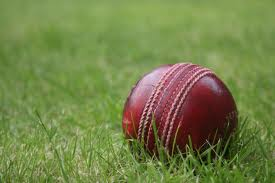How weather conditions affect the match
The weather conditions along with toss and other smaller factors play a huge role in determining the final result of a cricket match. Most of the time climate and weather is something that captains take into consideration while making the decision after winning the toss. Good weather conditions and clear skies can help the batsmen in scoring more runs. Similarly overcast and humid conditions can assist the bowling side. Here we will discuss the effects of the weather and playing conditions on a cricket match.
Firstly the clear blue sky is always a relieving sign for the batsmen, because in these conditions ball usually doesn’t swing that much. Even though the clear sky doesn’t make any difference as far as the seam bowling is concerned however if the sun is beating hard at the pitch, then usually it takes all the moisture away from the pitch in quick time hence making it a batsman’s paradise. This is why you will see more runs scored in general in clear conditions as compared to murky overcast days. Even though in modern cricket you won’t see green pitches too often however if the conditions are warm then the grass also dries out fairly quickly again assisting the batsmen.
On the other hand, bowlers love to bowl in overcast conditions, especially the fast bowlers because the ball swings and moves in the air in such conditions. Many theories have been proposed both in support and in opposition to this theory. Some experts think that clouds don’t make any difference in the movement of the ball, others say that the ball tends to swing a lot more in such conditions. The fast bowlers however like these conditions as compared to clear skies.
If there is rain in the air or the humidity levels are high then again it helps the bowlers. When the climate is rainy then pitches also have lots of moisture in them that fast bowlers can take advantage of, also in such conditions, the pitch takes a long time to dry out, therefore, giving the bowlers full opportunity to have a go at the batsmen.

In addition to the pitch, the ground also gets wet in rain which slows the ball traveling speed. Most of the time the pitch is covered but the whole ground is not covered. The ball tends to get slippery and it becomes harder for bowlers to grip the ball. This phenomenon also happens during day-night games where the dew causes problems for both bowling and batting sides during the second innings of the match.














